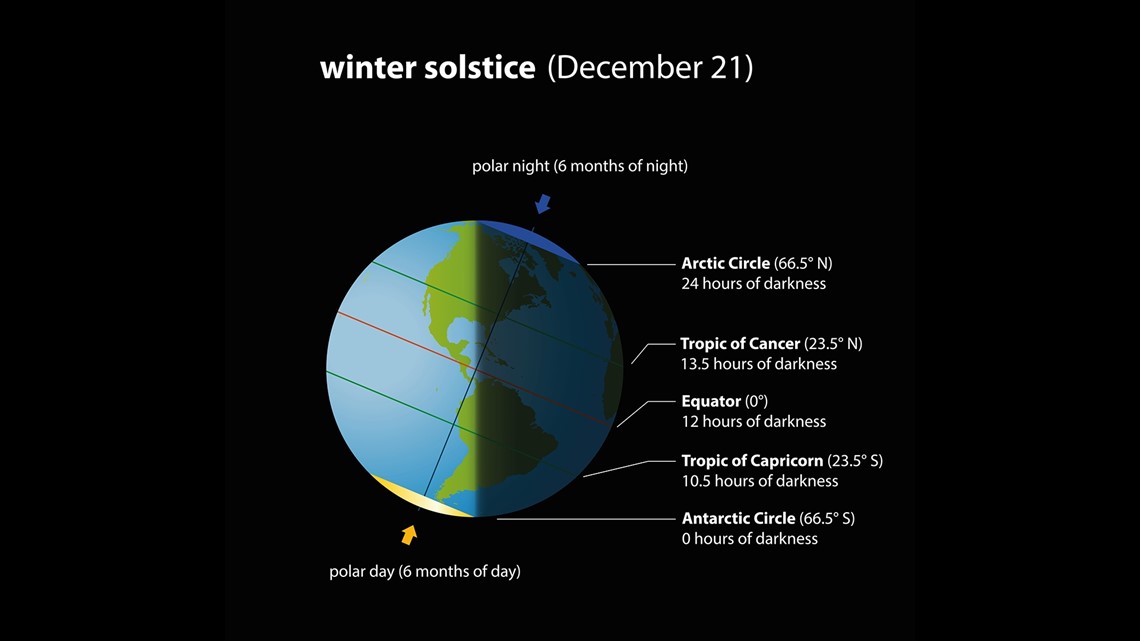Tuesday is the winter solstice, also known as the longest night of the year (or shortest day of the year, depending on your perspective). It's the day when the sun will be up for the shortest amount of time. It also marks the official start of winter -- regardless of how warm or cold it has been.
During the winter solstice, the sun will be at its lowest noontime point in the sky for the year -- at least in the northern hemisphere. That's because it's when the northern half of the Earth is tilted its farthest away from the sun due to the planet's axis.
Winter begins Tuesday at 10:59 a.m. ET; 9:59 a.m. CST; 8:59 a.m. MST; 7:59 a.m. PST, according to NASA. Although standard calendars may indicate the entire day is the winter solstice, the solstice is actually just the exact moment in time listed above.


In the southern hemisphere, the opposite is true. It will be the summer solstice in places like Australia because the southern half of the planet will be titled closest to the sun.
The Old Farmer's Almanac explains where the word solstice came from.
"The term 'solstice' comes from the Latin words sol (Sun) and sistere (to stand still) because, during the solstice, the angle between the Sun’s rays and the plane of the Earth’s equator (called declination) appears to stand still," the almanac says on its website.
If you can't resist a selfie (and assuming it's a sunny day on Tuesday), go outside and take a photo of your shadow on the ground at noon. That will be your longest shadow of the year for that time of day. Remember that spot and go back out on the day of the summer solstice on June 21, 2022, and take the same photo at noon. That will be your shortest noontime shadow of the year.



